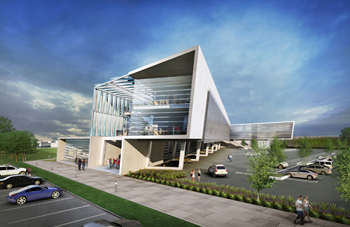Sustainable Design Principle #3: Challenge Convention
 LPA's 10 Principles of Absolute Design
LPA's 10 Principles of Absolute Design
- Inter + Act
- Do Less
- Challenge Convention
- Zoom Out
- Zoom In
- Build Smart
- Enrich Lives
- Create Value
- Prove It
- Step Up
LPA Sustainable Design Principle #3: Challenge Convention. Never assume. Never settle. Never accept the status quo. Keep an open mind and explore.
In reality, that's what we're trying to do here. Conventional thinking got us into some of the problems we're experiencing now. It's time to start thinking outside of the box in a creative and thoughtful manner. That's how we're going to solve some of the big issues that we're facing and some of the issues as they relate to water management and energy efficiency.
When it comes to energy, a really important part of "challenging convention" is to understand how energy is being used in your building. We are doing lots of energy audits for our clients these days. By understanding the source of their energy demands, they have a much better opportunity to tackle the problem, make some changes and experience the savings that go along with. To state it another way, if you can't measure it you can management it and managing energy costs is going to be more and more important going forward.
 Challenging convention requires new ethical standards as well. It's a very exciting time to work in the building industry; there are many new challenges and opportunities. With these opportunities come great responsibility -to refuse to settle for the energy efficiency standards of the past or the unsustainable land and material choices of the 20th century.
Challenging convention requires new ethical standards as well. It's a very exciting time to work in the building industry; there are many new challenges and opportunities. With these opportunities come great responsibility -to refuse to settle for the energy efficiency standards of the past or the unsustainable land and material choices of the 20th century.
Challenging all of these status quos is what we do every day at LPA. For us, it is yet another reason why we brought our engineering in house. We find that when architects and engineers work together everyone benefits from better data, usually energy related, earlier on in schematic design. It is fundamentally so different when your design partners are in-house. Informed design replaces that intuition or guesswork, we're practicing sustainability differently, and our work shows it.